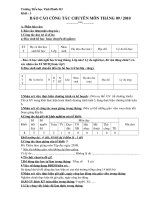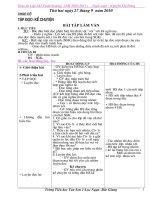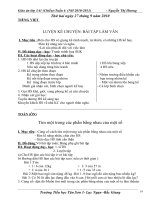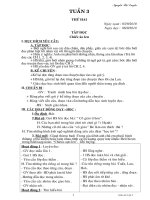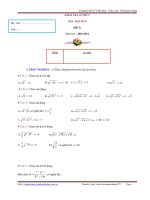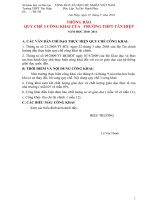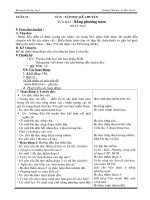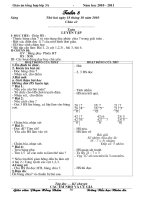10 11 01 37optical mineralogy tutorial 3
Bạn đang xem bản rút gọn của tài liệu. Xem và tải ngay bản đầy đủ của tài liệu tại đây (3.82 MB, 16 trang )
Optical Mineralogy in a Nutshell
Use of the petrographic microscope in
three easy lessons
Part III
© Jane Selverstone, University of New Mexico, 2003
A few new properties, and then some review…
Cleavage – number and orientation of cleavage
planes
Twinning – type of twinning, orientation
Extinction angle – parallel or inclined? Angle?
Habit – characteristic form of mineral
Cleavage
Most easily observed in PPL (upper polarizer out),
but visible in XN as well
• No cleavages:
quartz, olivine
• 1 good cleavage: micas
• 2 good cleavages: pyroxenes, amphiboles
Cleavage
2 cleavages
intersecting
at ~90°
pyroxene
2 cleavages
intersecting
at 60°/120°:
amphibole
120°
60°
Cleavage
random fractures,
no cleavage:
olivine
Twinning
Presence and style of twinning can be diagnostic
Twins are usually most obvious in XN (upper polarizer in)
Twinning - some examples
Clinopyroxene (augite)
• Simple twin on {100}
Plagioclase
• Simple (Carlsbad) twin on (010)
• Polysynthetic albite twins on (010)
• Pericline twin on (h01)
Extinction angle
Extinction behavior is a function of the relationship
between indicatrix orientation and crystallographic
orientation
Z
c
c=Z
nε
nω
b
Y
a=X
b=Y
a
X
parallel extinction
inclined extinction
Extinction angle – parallel extinction
• All uniaxial minerals show parallel extinction
• Orthorhombic minerals show parallel extinction
(this is because xtl axes and indicatrix axes coincide)
orthopyroxene
PPL
XN
Extinction angle - inclined extinction
Monoclinic and triclinic minerals:
indicatrix axes do not coincide with crystallographic axes
These minerals have inclined extinction
(and extinction angle helps to identify them)
extinction
angle
clinopyroxene
Habit or form
acicular
anhedral/irregular
bladed
blocky
elongate
euhedral
fibrous
prismatic
rounded
tabular
Habit or form
acicular
anhedral/irregular
bladed
blocky
elongate
euhedral
fibrous
prismatic
rounded
tabular
Review – techniques for identifying unknown minerals
Start in PPL:
• Color/pleochroism
• Relief
• Cleavages
• Habit
Then go to XN:
• Birefringence
• Twinning
• Extinction angle
• Uniaxial or biaxial?
• 2V if biaxial
• Positive or negative?
Go to Nesse or similar book…
•
•
•
•
•
•
Chemical formula
Symmetry
Uni or biaxial, (+) or (-)
RIs: lengths of indicatrix axes
Birefringence
2V if biaxial
Diagrams:
* Crystallographic axes
* Indicatrix axes
* Optic axes
* Cleavages
* Extinction angles
Another example
Crystallographic axes: a, b, c
Indicatrix axes: X, Y, Z or
ε, ω
Optic axes
Cleavages
Extinction angles
Then read text re color, pleochroism, habit, cleavage, twinning,
distinguishing features, occurrence – make sure properties match
your observations. If not, check another mineral…
On to real rocks…
…good luck and have fun!
